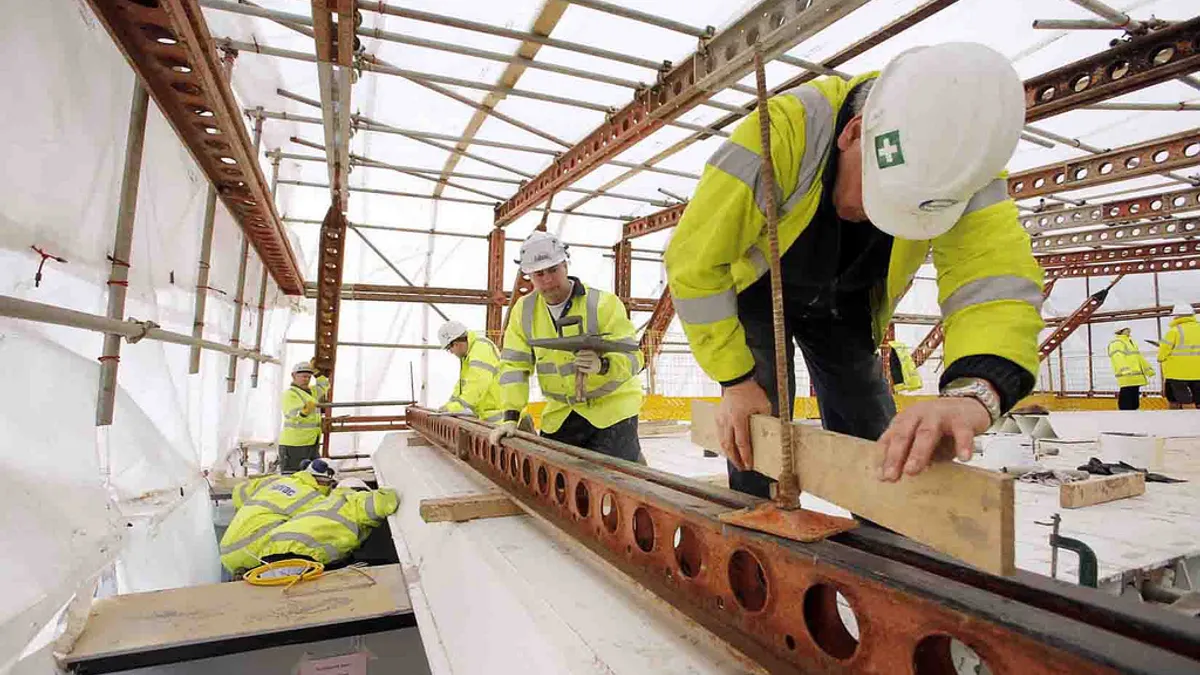Even though the U.S. unemployment rate is at a level not seen since the Great Depression, the construction industry's labor woes aren't close to ending, according to panelists at a recent Associated General Contractors of America webinar.
In most jurisdictions, projects are coming back on line, and construction managers are struggling to fill jobs. There are several factors suppressing skilled labor across the country, according to panelist Bob Majerus, vice president and general counsel for Hensel Phelps.
First of all, the enhanced unemployment benefit provided by the federal CARES Act is keeping many workers on the sidelines. The legislation, passed in March, supplements state coverage with an additional $600 a week, more than double the weekly maximum unemployment benefits in most states. This extra money, intended to keep workers afloat until businesses reopen, has provided a significant disincentive for construction workers to return to work, said Majerus.
“We’re hearing from some workers ‘When my unemployment money runs out I’ll be happy to come back to work, but not until then,'” he said. “They’re getting extra money every month so they prefer to stay at home.”
A $3 trillion federal coronavirus aid package recently approved by the House of Representatives expands the unemployment supplement through the end of January. In a recent letter to Congress, the AGC told elected leaders that this will make it challenging to rehire workers as demand for work rebounds.
“If you ... go back to work right now and even if you have the manpower and material to do that you are not going to start at 100% on day one."

Bob Majerus
Vice president and general counsel for Hensel Phelps
The second factor keeping workers away from jobsites is fear of contracting the virus, Majerus said. “We’re seeing it mostly with our trade partners,” he said. “Our subs are telling us they can’t keep a workforce and the main reason is that they’re all afraid.”
The No. 1 thing construction firms can do to employ a steady flow of workers and subs is to communicate their safety precautions and take immediate action when a COVID-19 case — or just a rumor of a case — occurs, he said.
“Once you get rumors flying around the jobsite that creates a real sense of fear, and two days later your plumbers aren’t showing up anymore,” he said. “You’ve got to tamp down rumors that someone has COVID and be transparent about how you’re handling suspected cases.”
New realities
In addition to labor issues, construction leaders need to realize that jobs will take much longer than before the pandemic, Majerus said. For instance, a project that lost three weeks due to government shutdowns will require much more than three weeks to catch up.
“If you get the order to go back to work right now and even if you have the manpower and material to do that you are not going to start at 100% on day one — there will be a ramp up,” he said. “Plus, there are new safety regulations, new PPE and new safety orientations so conditions will be different.”
While impacts like these are hard to quantify, his rule of thumb is to add 10 to 25 days to any job that has been shut down. To determine how the pandemic has affected a site, compare productivity levels from earlier this year to current levels, he said.
“I can almost guarantee there will be a drop in those numbers,” he added.
Tensions arise
On some jobs, conflict is brewing with owners, said panelist Bryan Kelley, vice president-legal at Howard S. Wright, a Balfour Beatty company, who said legal issues will soon follow.
“People are starting to get into their camps because there’s a limited amount of money” to finish jobs amid delays and shutdowns, Kelley said.
For the most part, projects that were in progress before the outbreak hit are being completed but new work in many parts of the country is being delayed, he added.
Going forward, general contractors should be cautious about the projects they consider and work to ensure that the financial backing is in place before joining any project, said Kelley.
“Try to identify high-risk clients,” the panelist said. “It might be dependent on the type of industry they’re in such as retail or the commercial office sector depending on who the tenant is.”
Construction managers are also dealing with enhanced OSHA compliance complaints and an uptick in internal human resources disputes, something Majerus attributed to the fact that “there is tension everywhere these days, in our workforce, with our crafts and with our subcontractors.”
“There are a lot of unknowns right now about whether our economy will recover and family concerns about loved ones going to work as well as concerns over whether people will have a job to go back to,” he said.





















